
By Angelo Randaci, Earth’s Ally Horticulturist
Angelo’s passion for plants has led him to explore many areas of horticulture including research, grounds management, technical training, design and nursery management.
A vast number of plants, although adapted best to their natural environment, will thrive indoors if given proper growing conditions and care. Not only will they tolerate a home environment but will make perfect long-term house companions. As plant parents, it’s important to be attentive because even in optimal growing conditions, houseplant problems may occur. Pests, diseases, and imbalances in the indoor environment can wreak havoc on plants in the home despite our best efforts. By troubleshooting the symptoms many houseplant problems can be avoided and corrected.
Expert Tip: The number one way to avoid houseplant problems is to do research prior to purchasing a plant for your home.
First, take note of possible places in your home where plants can thrive. Once you decide on placement, the next step is to choose the plant best suited for that location. A brightly or poorly lit area will each accept a different plant. Some will require regular watering and others will require the soil to dry before adding water. Some plants–while beautiful–are difficult to maintain regardless of your talents.
Related: How to Care for Orchids for Beginners
Most houseplant problems are associated with humidity, light, watering, pests, or diseases. Plants may suffer as a result of either one or any combination of these factors.
The Best Humidity Levels for Houseplants

Tropical plants grow naturally in humidity levels of 80% or more. This level of humidity does not exist in most homes, especially during homes heated in winter. Most common tropical houseplants, however, will tolerate humidity around 45% to 50%. If the humidity drops below that level, problems may occur.
Low humidity can cause plants to dry more quickly causing brown leaf edges, crispy or yellow leaves, and other problems. An effective method for monitoring humidity is to place a hygrometer near your plant growing area. If your humidity levels are adequate, you can concentrate on other possible causes for plant decline.
Related: How to Keep Houseplants Healthy
If there are humidity issues, there are solutions. Grouping plants together can be effective. As the plants transpire water out of their leaves, they create higher humidity within the growing area. This would work best if you had a large grouping of plants in a small room that would help contain the moisture. Another possible solution would be to place a humidifier for plant groupings that enjoy higher humidity levels or see about having a whole-house humidifier installed in your home.
You may be able to raise humidity by placing plants in kitchens, bathrooms, and on pebble trays. This however is not the most effective method because water vapor diffuses quickly from bathrooms and kitchens and will not supply a constant rise in humidity. The same is true with pebble trays. Misting plants is another common practice but misting only adds humidity while there are droplets of water on the leaves. You would have to mist your plants every 15 minutes or so to raise humidity and you would risk causing fungus problems. A contained system such as a terrarium or growing case will do a better job of containing humidity.
The Type of Light for Houseplants
Many plant issues involve either too much or not enough light. Leaves damaged from too much light can appear pale, bleached, faded, or scorched. This is caused by the strong light breaking down the chlorophyll. Plants receiving too little light will show poor, spindly growth.
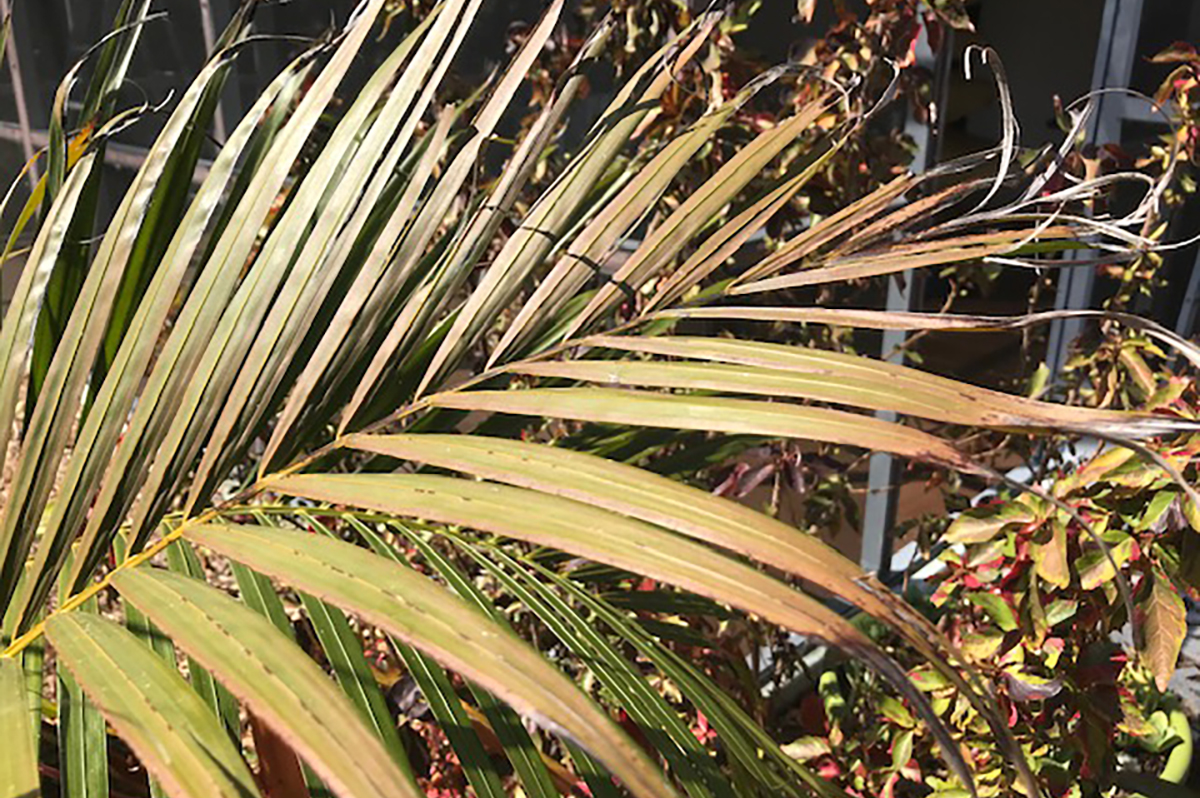
Related: How to Keep Houseplants Healthy
When to Water Houseplants
Overwatering is another common reason houseplants fail. When overwatered, plants may have wilted leaves even though the soil is moist. New leaves might turn brown and appear water-soaked. A general rule is to allow the top 1/3 of the soil to dry before watering again. This is only a simple guideline because different plants will require less or more water.
Underwatering is not as serious as overwatering because plants will generally perk up when watered.
To check your houseplant’s water levels, place your finger in the top couple of inches of soil (deeper for large pots) and feel if it is dry to the touch. If the soil feels moist, hold off on watering. Use this in conjunction with your visual assessment. Does the soil look wet or dry?
Chopstick method – Insert a chopstick into the soil a few inches deep and leave it in the soil for 10-15 minutes. Remove the chopstick and evaluate the color. If the chopstick changed color, it has absorbed water indicating that the soil has sufficient moisture.
Feel the weight of the pot- After watering your plant, pick up the pot and feel the weight. Check it every few days. As the soil dries, the pot will feel lighter.
Houseplant Problems, Pests, and Diseases
The main pests that attack houseplants are spider mites, aphids, mealybugs, scale, thrips, and whiteflies. Pests like these are generally easy to troubleshoot because you can visually see them. A hand lens can be helpful in finding pests on your plants. Inspect your plants regularly, identify the pest, and apply an organic insecticide and miticide.
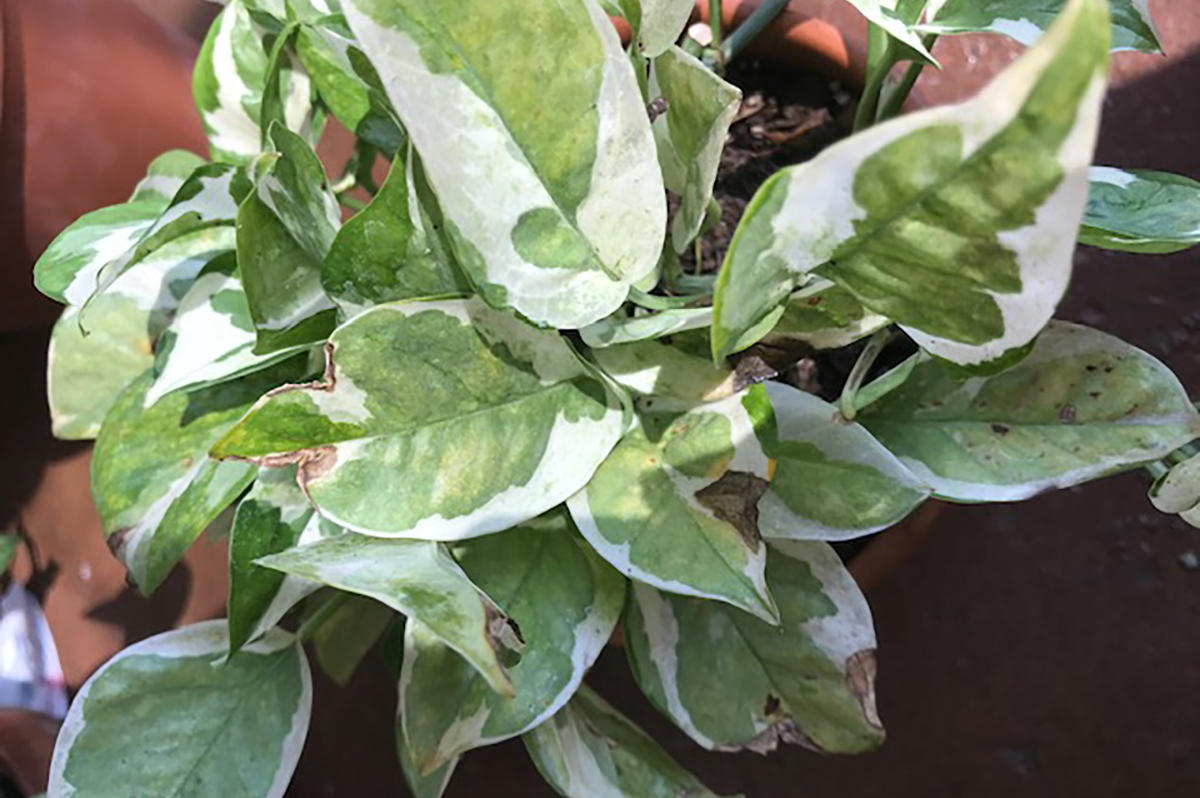
Related: It’s Time to Upgrade Your Insecticide
Diseases are more difficult to identify. Root rot is usually the result of overwatering and is identified by roots or stems turning soggy and black or brown. If detected early, you may be able to save the plant by letting the soil dry out and repotting it into fresh soil. Apply an organic fungicide and bactericide to help increase the chances of survival. Bacterial and fungal diseases may also occur and are generally identified by black spots or water-soaked areas on the leaves, sometimes with a yellow halo. Remove these leaves, increase air circulation, and maintain proper light levels for the particular plant.
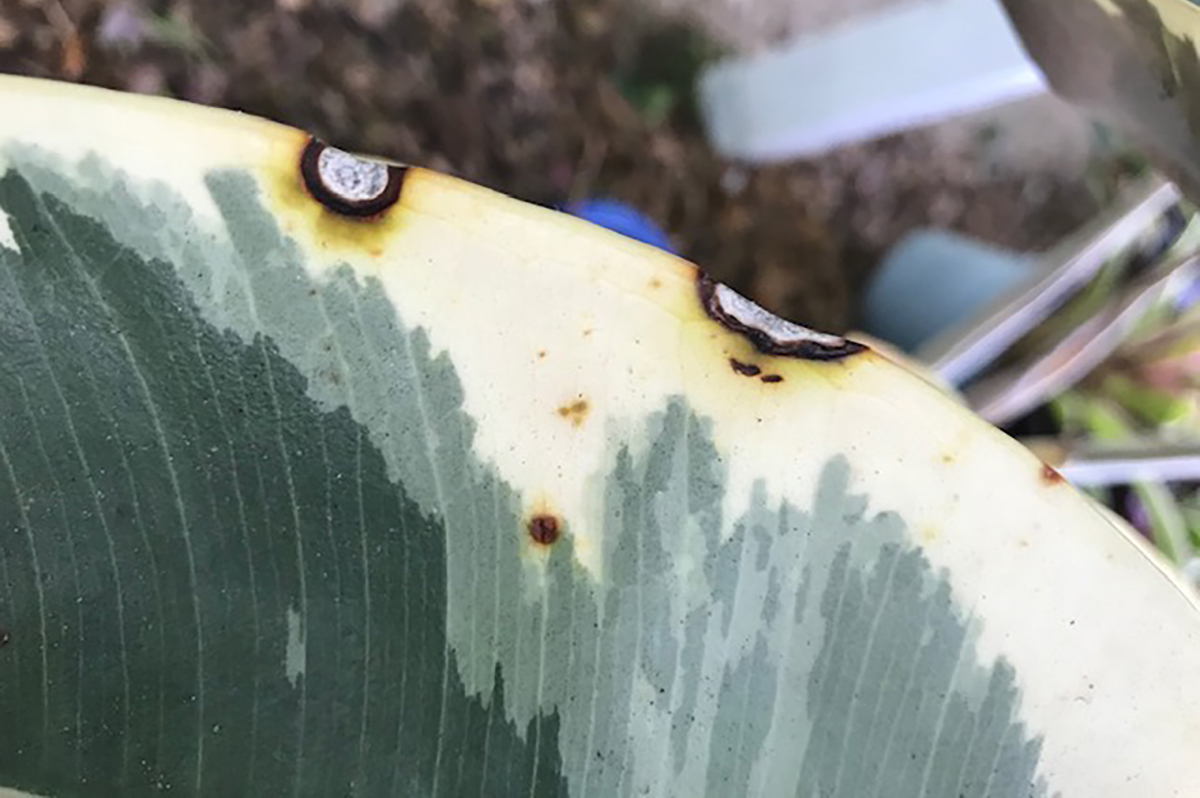
Expert Tip: The second best way to avoid houseplant problems is to treat your plants preventatively.
Common Houseplant Problems
Houseplant Problems: Stretching, Spindly, or Few Flowers
If your plant has long spindly stems and sparse leaves, it is stretching for more light. This often happens during the winter months when sunlight hours are short. Plants may also drop lower leaves to conserve energy. Here are a few possible solutions:
- Increase the amount of light or move your plant to where it will receive brighter sunlight.
- Add supplemental lighting with grow lights to help them get through low-light seasons.
- Turn your houseplants periodically to give them more even lighting.
- Some plants become leggy if the humidity is too low in your home. Some humidity-sensitive plants include hoyas and begonias. Consider purchasing a humidifier.
- Prune leggy stems to encourage new growth and branching once they receive brighter light conditions. On many houseplants, you can keep the pruned stems and root them in soil or water.

Related: 11 Easy Houseplants for Plant Propagation
Houseplant Problems: Brown Leaf Tips
Possible causes are inconsistent watering, low humidity, and fertilizer damage.
- Watering: Water when a plant needs it, do not overwater or let your plant get too dry before watering. When you water, water completely until you see water coming out of the drainage holes. If your plant has a saucer, be sure to empty the excess water from the saucer.
- Humidity: Brown tips can also occur from a lack of humidity in the air. Grouping plants together will help add humidity as will placing a humidifier in your plant area.
- Fertilizer damage: Salt build-up from over-fertilizing or from softened water may also contribute to brown leaf tips. Flush plants with water during feeding months to remove excess salts. Repot with fresh soil every few years. Feed only during active growth periods and reduce to one-half strength.
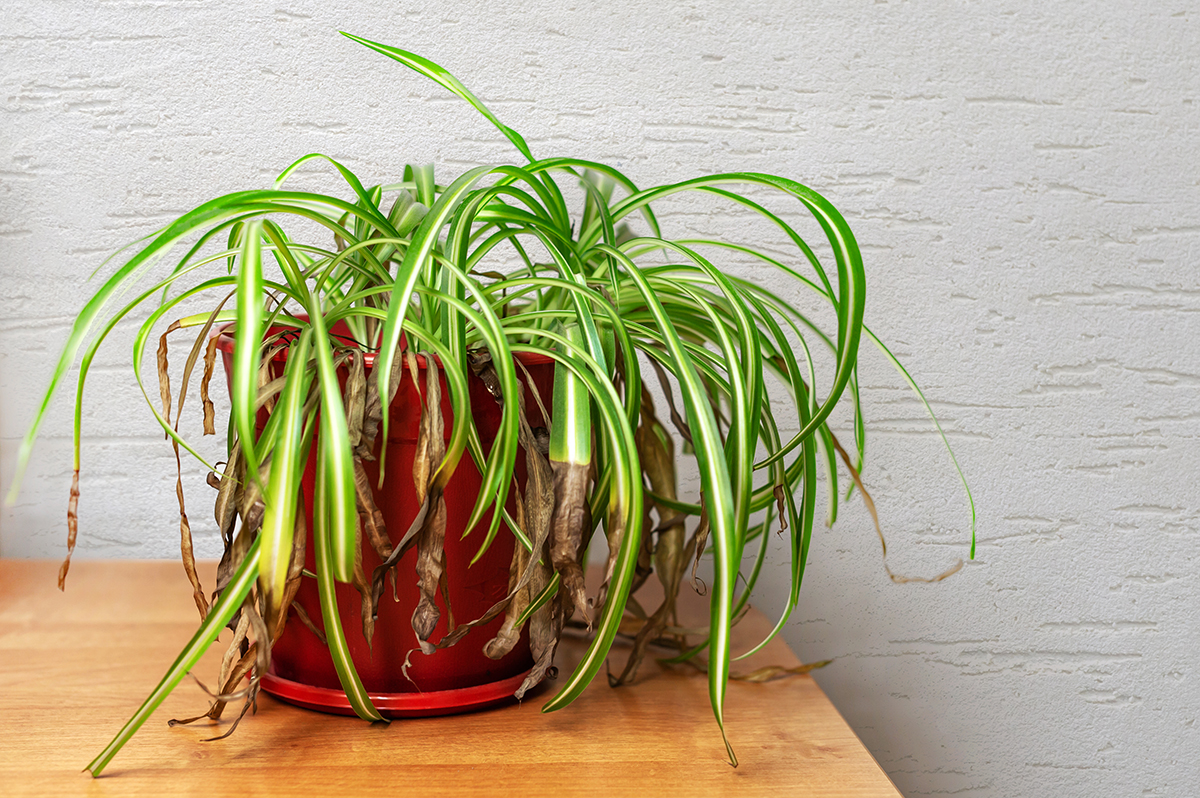
Houseplant Problems: Dropping Leaves
Some plants such as Ficus are sensitive to changes in temperatures and drafts, as well as changes in location, and will drop leaves as a result.
- Avoid placing plants near radiators and other heat sources.
- Keep plants a safe distance from doorways, corridors or other drafty areas that would cause fluctuations in temperature and humidity. This can cause plants to lose leaves and generally decline.
- Low light could also be a cause for dropping leaves. This is most evident with lower leaves receiving less light
- Once the situation is corrected, new, healthy leaves will replace the old ones.
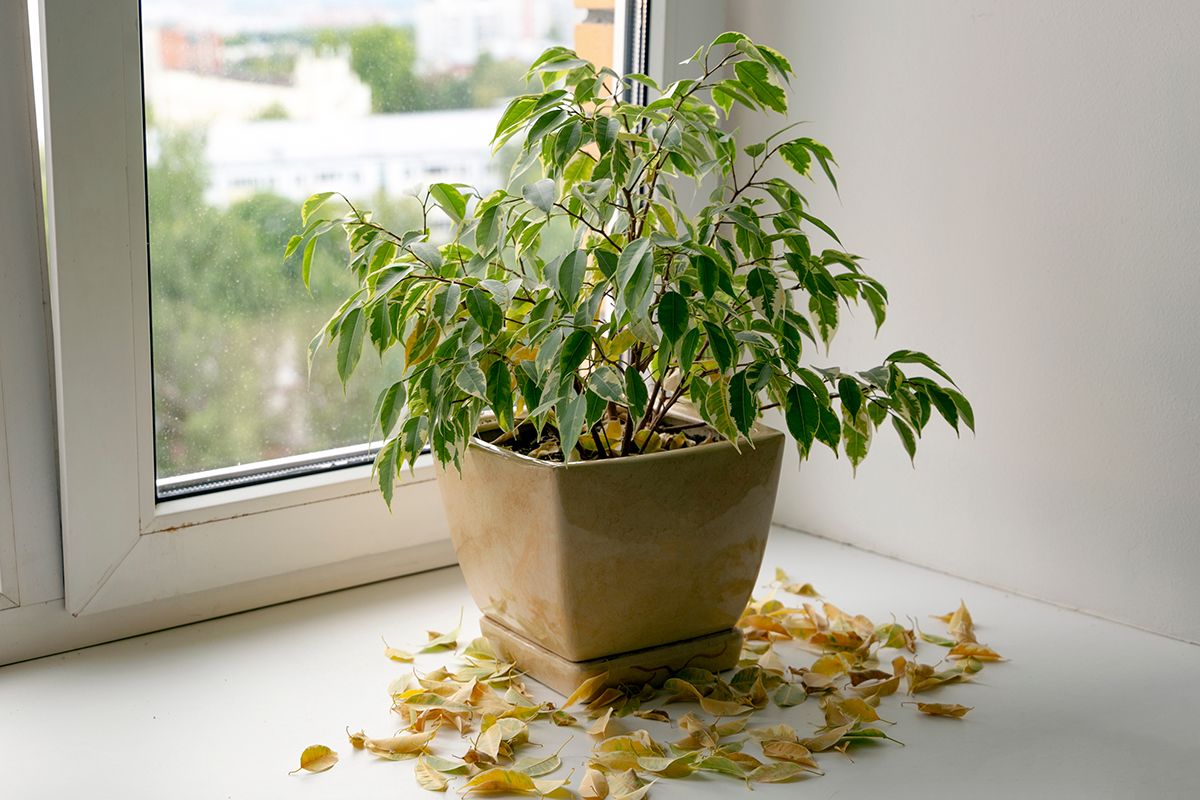
Houseplant Problem: Pale and Yellow Leaves
Yellow leaves are often caused by over-watering or too little light.
- Make sure your container has drainage holes and the potting mix is well draining.
- You may also have a nutritional deficiency if watering is consistent and there is adequate light.

Houseplant Problem: Curling or Distorted Leaves
Plants exposed to too much light are often responsible for leaf curling.
- Leaves curling upwards are an indication that your plant is getting too much light. If this is the case, move it further away from the light source.
- Leaves will curl to conserve water if your plant is underwatered.
- Older leaves may curl near the bottom of the plant. Remove the old leaves to encourage new growth.
- Leaf curling may be a symptom of pests hiding among leaves and stems. Check the undersides of leaves for aphids, mealybugs, and thrips. Aphids are the most common pests that cause curling leaves.

Houseplant Problems: Wilting Leaves
Underwatering is the easiest problem to identify. If you have not watered your plant for an extended period and the soil is very dry, underwatering is probably the cause. The amount of water needed for plant health varies depending on the type of plant. Some plants such as peace lilies will exhibit collapsing of the leaves but will recover after watering. Others will not. Every plant has a permanent wilting point, or PWP. Once it has reached the PWP, it will not recover.
If your plant exhibits wilted leaves, overwatering may be the cause. This happens when constantly waterlogged soil prevents oxygen from reaching the roots. When roots die, they cannot transport water to the plant causing leaves to wilt. Root rot is the end result causing roots to go black and mushy. Soil may smell rotten and rotting may spread to lower stems and leaves.
Houseplant Problems: Leaf Spotting
Fungal and bacterial diseases are the major cause of leaf spots. Several species of bacteria attack indoor plants.
- Spots appear soft and mushy and may have an odor.
- Leaf margins have spots that either run together or the center of the spot will fall out. You may also see yellow margins around the leaf lesions.
- Water early in the day to allow leaf surfaces to dry; space plants to increase air circulation; pick off diseased leaves and destroy them.
- Provide frequent treatments of an organic fungicide and treat preventively after the disease is controlled.
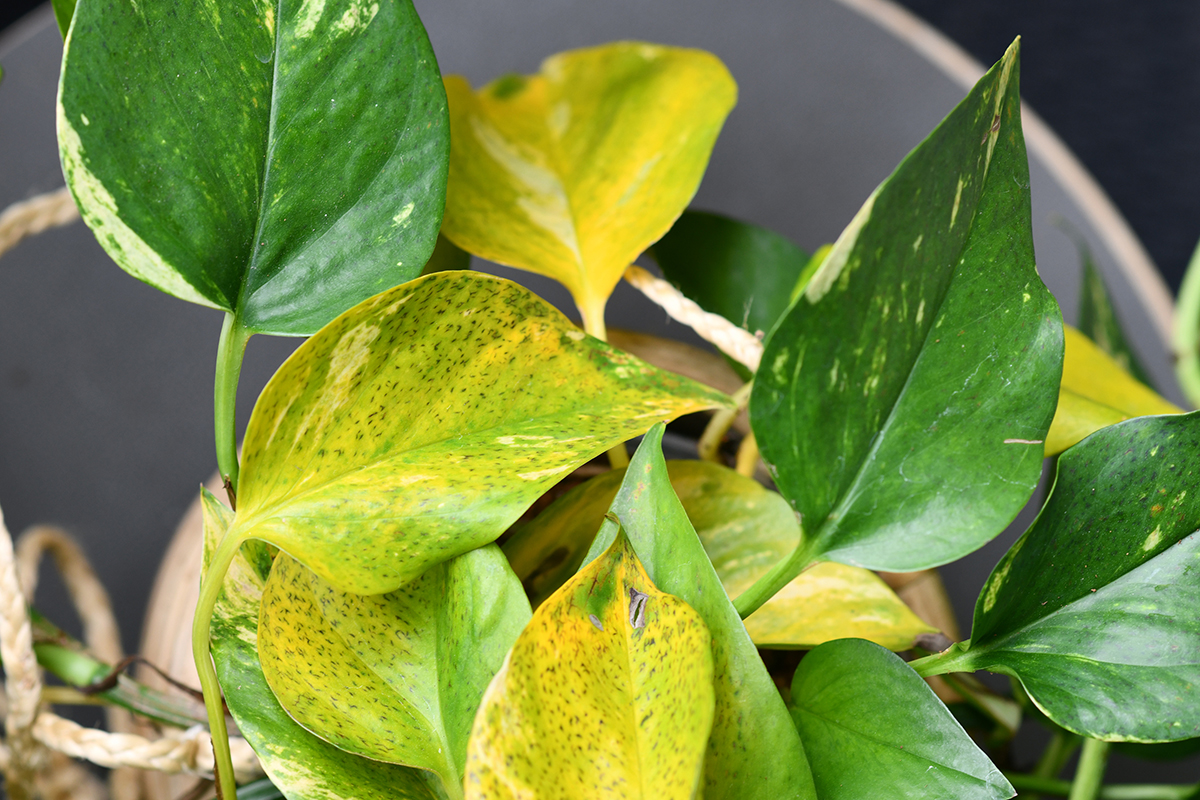
We’d love to hear how you’re using Earth’s Ally products. Share your experience and stay connected with the #EarthsAlly community on Facebook, Instagram, and Twitter for access to our latest blog posts, giveaways, and exclusive promotions.
